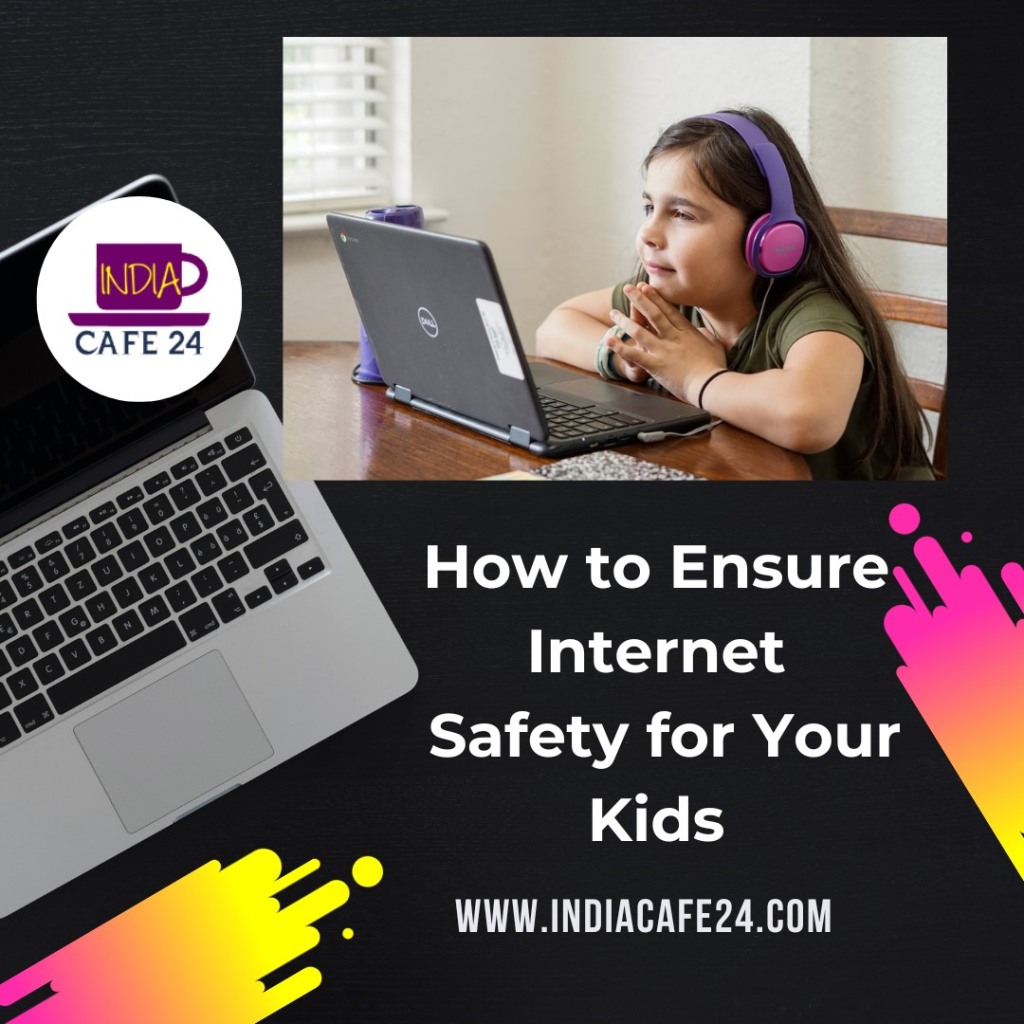How to Ensure Internet Safety for Your Kids
How to Ensure Internet Safety for Your Kids
The internet offers a wealth of enjoyment and information, yet it has dark corners, particularly for our young ones. But just like in the real world, it has its alleys and corners that can be concerning, especially for our youngest surfers. Every parent and guardian wants to ensure when their child ventures online, they step into a safe and supportive space. Here’s a roadmap to help navigate the vast digital landscape:
1. Start Talking Early:
Today young kids also use the Internet, so it’s vital to teach them about online safety right from the beginning. It’s a must to explain the distinction between the tangible and digital realms, remind them that their online actions can have lasting consequences, and arm them with smart tips for navigating the web. As they grow and their online activities evolve, adjust your guidance. Always keep the communication lines open. Ensure they know they can approach you with any internet-related questions or concerns.
2. Implement Safety Measures with Tools:
Think of parental controls not just as electronic minders but as active steps to guard youngsters from the vastness and uncertainties of the internet. They can filter out unwanted content, limit screen time, and monitor digital footprints. Yet, they’re most effective when paired with real conversations about the ‘whys’ of online safety. It’s not just about blocking harmful stuff; it’s about discussing the reasons behind these boundaries. You can try out Happinetz for protecting your kids online, I did and I have happy and relaxed about my kids online safety.
3. Place Tech in Shared Spaces:
Having gadgets in places like the family room encourages an open digital environment. With screens out where everyone can see, kids might think twice before venturing into uncertain online territories. This arrangement also lets parents be a part of their child’s online journey, allowing for shared digital discoveries and heart-to-heart chats about the virtual world.
4. Set Clear Digital Guidelines:
Children benefit immensely from well-defined guidelines when venturing online. By establishing rules—such as limiting screen hours, defining suitable applications, and scheduling online pauses—we create a blueprint for them to browse safely. Drawing clear lines, whether about divulging personal details or recognizing unsuitable websites, equips them to understand what’s okay and what’s not clearly. This organized strategy not only prioritizes safety but also cultivates responsible online behavior.
5. Promote Open-hearted Discussions:
It is crucial to foster a home atmosphere where kids can openly discuss their online experiences. If they stumble upon a confusing ad, receive an unsettling message, or simply feel swamped online, they should know they can turn to their parents without hesitation. This kind of openness nurtures mutual respect and understanding. It offers parents a window into their child’s virtual world, while kids benefit from timely guidance, making the vast web seem a bit more friendly.
6. Stay in the Loop:
The world of tech and the internet is always shifting, introducing new apps and challenges. Parents must keep a finger on the digital pulse for a child’s protection. They can be one step ahead by familiarizing themselves with the latest apps, trending online games, and emerging cyber threats. Participating in parent discussion groups, joining online safety seminars, or just chatting with children about their newest internet hobbies can provide insights into potential risks, allowing guidance in the ever-evolving online universe.
7. Prioritize Online Privacy:
In times when cyber threats and information leaks are common, it’s critical to shield personal details. Periodically check and modify privacy configurations on social platforms, apps, and online sites to ensure your child’s information remains secure. Instil in them the value of robust, distinct passwords and the dangers of revealing too much. Underlining the essence of digital privacy can inspire them to consistently review and refine their online security practices as they mature.
8. Address Online Harassment:
Just as playgrounds sometimes have bullies, the internet also does it. Prepare your child to spot, speak out against, and sidestep online harassment. Highlight the significance of their words and actions on the web, encouraging them to spread positivity and compassion. Talk about the red flags of being cyberbullied and give them the confidence to share if they, or a friend, face online torment. Provide them the tools to shut out, report, and disengage from online aggressors.
9. Talk About Their Online Legacy:
Each like, share, and status is part of an individual’s digital legacy. Kids should know that what they do online doesn’t just vanish—it often sticks around. Discuss how the internet remembers, even if things get deleted, and how these traces can affect prospects, such as college applications or job searches. Encouraging a responsible digital demeanor means they’ll pause and ponder before they share, grasping the gravity of their online choices.
10. Lead by Example:
Kids often mirror the actions of adults. By showcasing sensible and considerate online behavior, you’re giving them a real-world blueprint to mirror. It includes carefully sharing personal details, taking breaks from screens, and participating in positive online interactions. When children see you tread the internet with prudence, integrity, and mindfulness, it motivates them to adopt these practices, fortifying their cyber safety.
Wrapping Up
In our tech-savvy world, taking deliberate steps is the key to ensuring our kids’ safety on the internet. Establishing firm guidelines, valuing open conversations, and exemplifying good digital behavior set the groundwork. Staying current with the ever-shifting online scene is crucial, fostering a sense of trust and transparency. These measures, when combined, offer a robust approach, enabling our young ones to traverse the web both securely and with self-assurance. Internet Does Not Discriminate Young or Adult... so we need to be cautious.
This post is a part of Happinetz – Internet Does Not Discriminate












It’s so vital to conscientise youngsters particularly about the dangers lying hidden in their favorite sites..
Internet safety for your kids is paramount, and establishing open communication about online risks and responsible usage is key. Setting parental controls and teaching them to safeguard personal information helps create a secure online environment for their exploration and learning.
Internet safety is very important, as it is easy for tender minds to get wrongly influenced. Tools like Happinetz are need of the hour.
In today’s digital era, where the internet has become an integral part of our lives, ensuring kids’ internet safety is paramount.Keep online activities – whether on laptops, tablets or family computers – in common family home where you can easily monitor what your kids are doing.
Such an important topic to discuss Samata. Internet safety for kids is important in today’s digital age. We must educate them about online risks, privacy, and responsible behavior. I agree with you on the importance of fostering an environment where kids feel comfortable discussing their online experiences..It’s a two-way street that promotes trust and communication. It is a win-win situation for parents when they come for guidance from parents.
There’s so much happening around our kids already and with the involvement of the internet in their lives, they are always overwhelmed. It’s highly concerning and every day in a new battle.